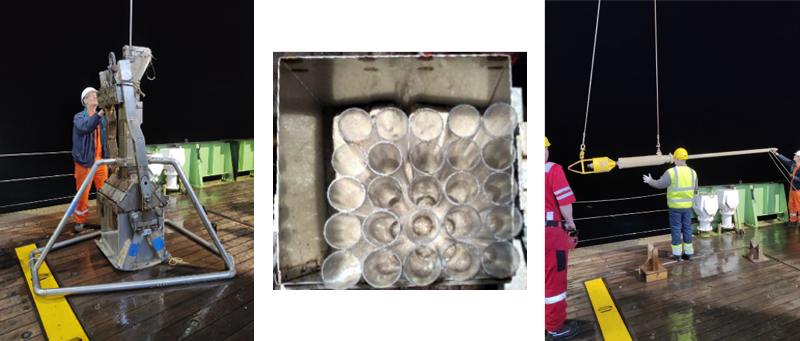Hello, I am Olmo Miguez-Salas, a Humboldt postdoctoral fellow working in the Senckenberg Institute in Frankfurt (Germany). My research involves ichnological analysis of marine sediments; in other words, I study bioturbational processes. Bioturbation is generally defined as the reworking of soils and sediments by animals or plants. In the deep-sea, bioturbating activities are mainly conducted by benthic fauna and include burrowing, ingestion, and defecation among others. These activities have a profound effect on the deep-sea environment and global geochemical cycles.
Back in February 2022, I applied for a CLASS Early Career Researchers fellowship to conduct a Bioturbation core analysis of PAP abyssal hill and plains during the JC231 (RRS James Cook). The proposed project intended to address bioturbation features (i.e., diversity, type, abundance) at the central PAP and the adjacent abyssal hill. The area was selected because the PAP and the adjacent hill are of special scientific interest as they record complex hydrography with different POC fluxes, which affect the benthic habitat. The proposed methodology was a combination of boxcore and gravity core samples and further X-ray analysis. The boxcore (image left, below) is a steel sampling box that can contain a seafloor sediment block (50 × 50 × 50cm). Once the core box reaches the seafloor it is filled with sediment. The sample is secured by moving the spade-closing lever arm to lower the cutting edge of the spade into the sediment, until the spade completely covers the bottom of the sediment box. The gravity core is a cylindrical steel core (inside diameter of less than 10cm) and gravity carries it to the bottom of the water body. The recovered sediment length can go up to 3m, comprising thousands or even millions of years of deep-sea sediment information (depending on the sedimentation rate of the basin).

After the positive evaluation of my project by CLASS committee, last month I travelled to NOC (Southampton, UK) to join the expedition. During JC231, NMFD-supplied USNEL-type box core (50 × 50 × 50cm) was used in the PAP central and hill areas. Then, each box core was subsampled with 25 plastic core liners. The 25 core liners were emplaced in a closely spaced 5 × 5 grid (see image below), maintaining a specific orientation between all of them (yellow T was drawn on the core liners to keep the original orientation). Yellow caps were used for the top of the core liners and red ones for the bottom. Finally, core liners were stored in the core racks in the controlled temperature laboratory (c. 6°C). The gravity corer consisted of a head weight connected to a 3m steel barrel (see image below). A plastic core liner, as used for the box core subsampling, was inserted into the barrel and the free end fitted with a core catcher (“fingers”) and secured into the barrel with a core cutter. All four deployments were successful. On deck the core cutter was removed, the core liner pulled out and cut into 1m sections. Three of the gravity cores were cut into 3 × 1m sections. One of them had less than 2m sediment thickness, thus, only two sections were retained. Yellow caps were used for the top of the core liners and red ones for the bottom. Finally, sections were stored in the core racks in the controlled temperature lab.
A week ago, we arrived back to NOC and I transferred the cores to BOSCORF for further X-ray analysis. I’m now processing the first X-ray core data to address bioturbational features which will help to understand implications of the bioturbating fauna in the deep-sea environment. This expedition was a great experience in many ways as I had the opportunity to collaborate with worldwide renowned deep-sea benthic specialist. Also, I learned new marine research techniques that are far away from my area of expertise. I can’t wait to get all the X-ray data in my hands so I can start analyzing it and writing the future paper!!